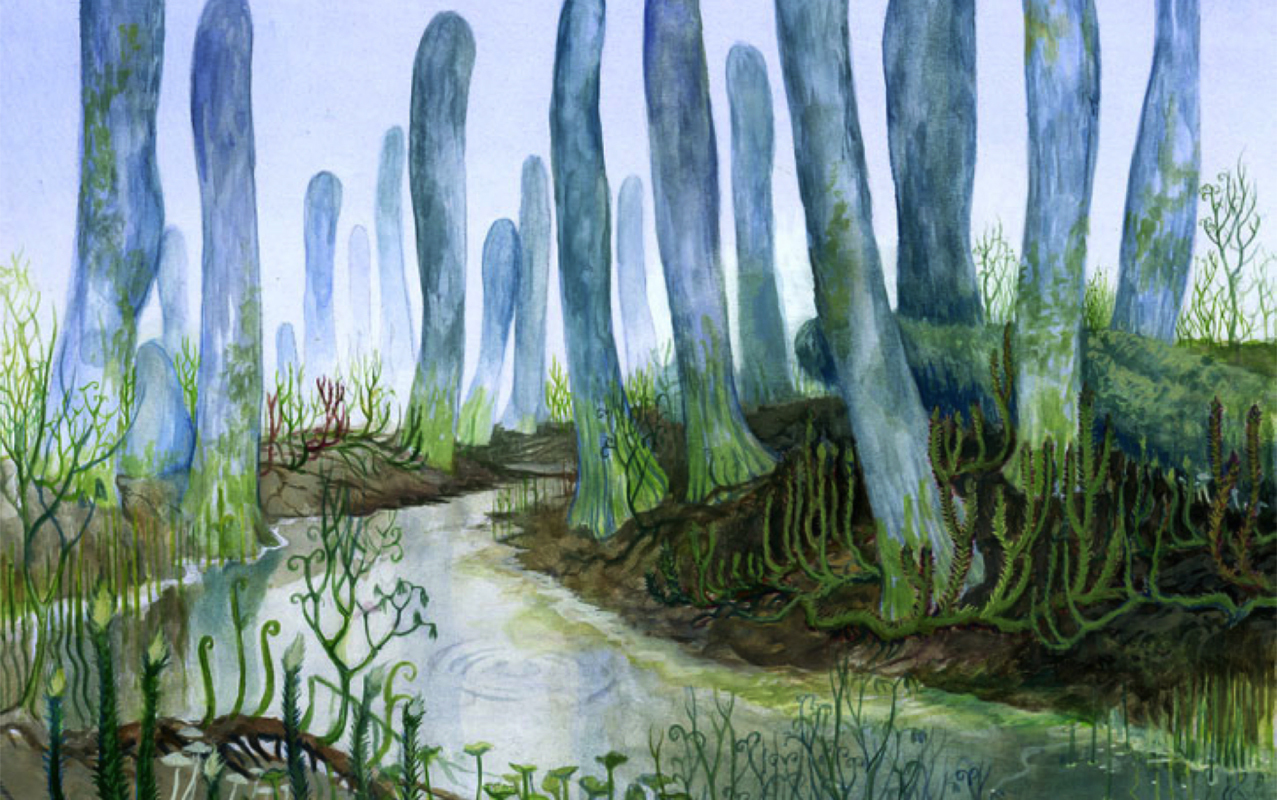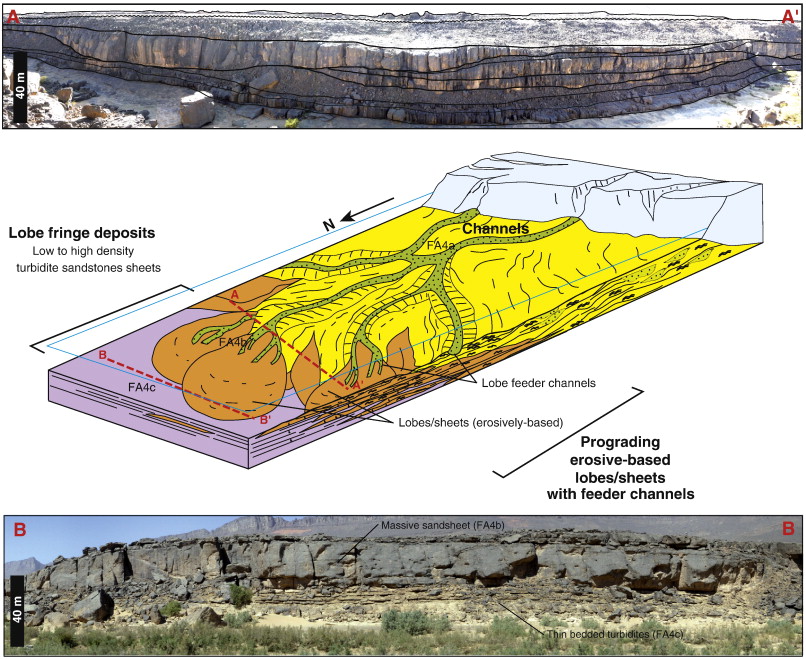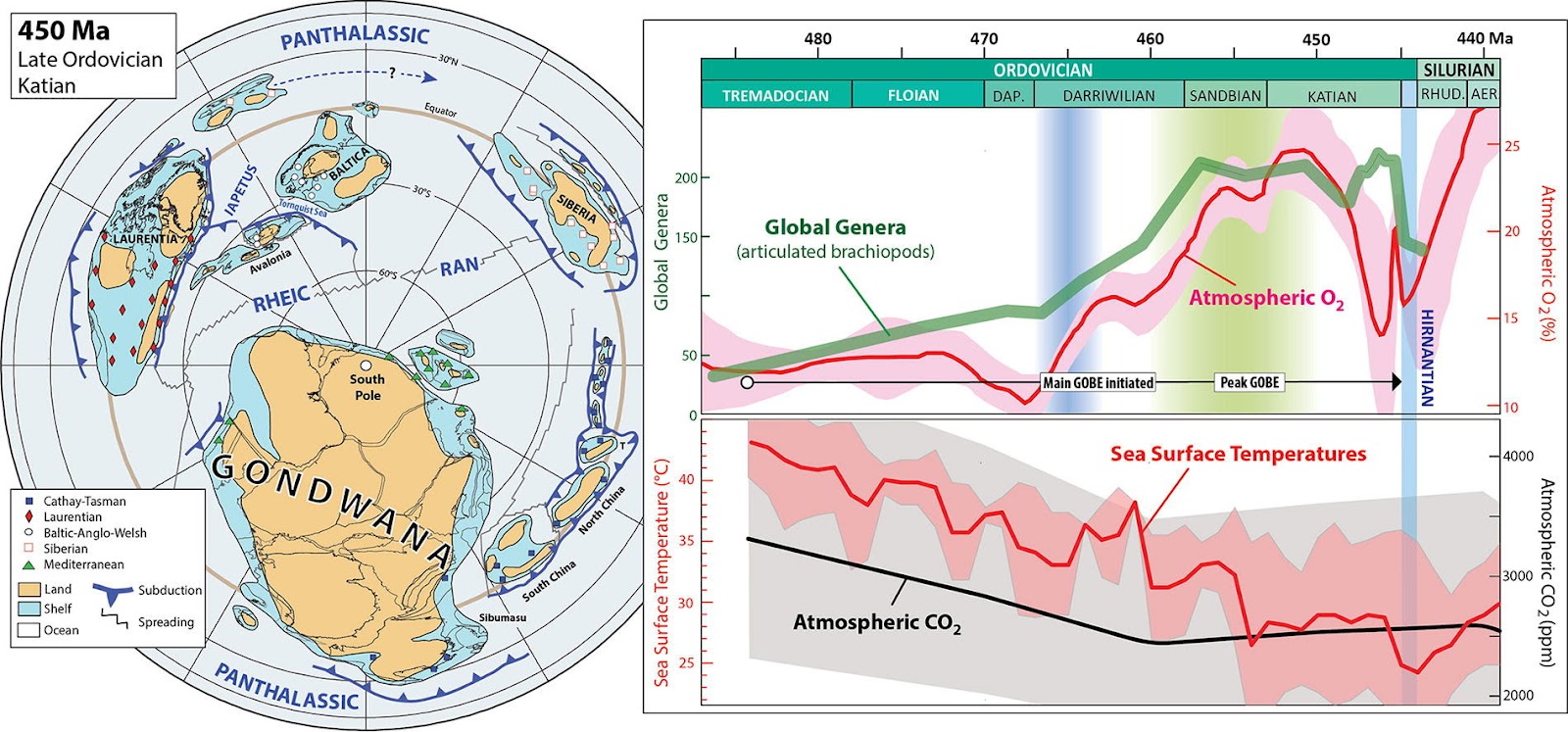Plants, Rocks, and Cascading Global Cooling
If solving climate change was a riddle, we might look back half a billion years ago for a clue.
Half a billion years ago, there was no soil, only ocean and rock. The first plants able to survive ashore thrived through a plant-fungi symbiosis – where the fungi, the ancestors of modern mycorrhizae, would help supply mineral nutrients and the plants would fix solar energy into organic carbon via photosynthesis. Both early vascular plants and the ancestors of modern mosses and liverworts produced decomposition-resistant wind-blown spores, coated with the almost indestructible substance: sporopollenin. This “diamond-tough” biopolymer enabled them to carpet the Earth, enhancing multiple cascading processes, such as silicate rock weathering, that sucked carbon dioxide from the air. The Earth plummeted into a massive glaciation.
Our Riddle
In this post, it is my intention to weave these three learnings from the Ordovician period into something useful to climate technologists and advocates today.
- Symbiosis instantiates evolution
- Nature is the planet’s most brilliant engineer by far
- Feedback loops can be our friends
As with any riddle, the answer is a little off-kilter from the clue. We are not recommending trying to replicate Ordovician processes exactly (they were radical and resulted in mass extinctions), but rather applying their core capabilities and principles to modern climate technology. We are quite hopeful looking at the carbon technology space and seeing companies like Lithos pioneering enhanced rock weathering that utilizes a scientific MRV (measurement, reporting, and verification) methodology. We see enormous potential in the elegance of nature’s engineering to guide us towards new solutions. By studying the Ordovician, we see it is not a single solution that created a paradigm shift, but rather it is the interplay of nested self-regulating systems as they move toward a new equilibrium. A set of new lifeforms on Earth - terrestrial plants and symbiotic cooperatives between fungi and algae - caused a sequence of events, including the formation of soil, changes in the flow of rivers, and the chemical dissolution of rocks into the oceans. Our vision today is to see plants and rocks and geochemical cycles working together, to see technology, policy, and business, partnering in new ways because we need a new kind of symbiosis to quite literally blanket the earth.
Now, let’s dive deeper into the Ordovician period, see what processes were at play, and learn how we might effectively employ these processes for the goal of controlled global cooling.
The Ordovician Period
The Ordovician period lasted 42 Ma (mega annum or “millions of years”), from 488 to 444 MABP. During this time, land-based life began its first sustained expansion across the continents, which was beginning the process of merger that would lead to the complete assembly of Pangaea by the Permian period. Until now, terrestrial life had formed only a thin skin on certain rock surfaces and a biofilm crust on barren regolith. By the end of the Ordovician, fungal-algal cooperative organisms known as nematophytes were beginning to establish the first soils, their hyphal filaments infiltrating and widening cracks between rocks, and secreting organic acids such as oxalates to further break down lithic minerals. Some refer to it as the time “when fungi ruled the earth.”

Measuring more than 8m tall and 1m wide, Prototaxites (Nematophyta) towered over the other organisms of the Late Silurian–Late Devonian period. Ever since its discovery in the mid-1800s, scientists have debated its taxonomy, though most agree it is of fungal origin.
As mosses, hornworts, and early vascular plants began spreading from the edges of wetlands and river deltas, their bodies started to stabilize and shift the river systems, leading to large amounts of sediment production and the beginning of soil as we know it. All this biological activity broke down the rocks and exposed vast areas to mineral weathering. CO2 absorption by the land surface reached hitherto unprecedented levels. This episode of drawdown correlates with an ice age, the Andean-Saharan glaciation, from 460 to 420 MABP. The drawdown extended into the early Silurian period and throughout a mass extinction episode, the Late Ordovician Mass Extinction, in which over 60% of marine genera and 85% of marine species perished.
The Carbonate-Silicate Cycle

To understand this massive cooling event, we need to understand the carbonate-silicate cycle. Silicate weathering, the process at play in enhanced rock weathering technologies today, is a chemical process intimately connected with planetary water cycles and also geological activity. The simple explanation is that CO2 dissolved in rainwater forms carbonic acid, a weakly corrosive substance that flows through waterways and comes into contact with rocks on the ground. The carbonic acid dissolves the metals from silicate rocks (mainly calcium and magnesium), yielding metal ions, bicarbonate, and silica. These dissolved minerals accumulate in soils and some of them make their way down rivers into the ocean, where marine organisms such as molluscs and foraminifera use the bicarbonate to construct shells, precipitating it out of solution. Over long timescales, large deposits of carbonate minerals build up on the seafloor from the shells of these animals. Some of these are subducted into the mantle and the carbon is re-emitted by volcanoes, but not all, and this imbalance serves as a downward pressure on long-term atmospheric CO2 levels. The solubility of calcium carbonate in seawater varies according to temperature, pressure, and acidity. Carbonate is most soluble at low temperatures, high pressures, and higher acidity (lower pH). Because of this variation, in order for long-term sequestration to take place, carbonates need to be deposited in shallow seas, above what is known as the “carbonate compensation depth (CCD)”. In the current oceans, this depth lies between 4000 and 5000 meters, but increased CO2 dissolution in the oceans due to human emissions is progressively acidifying the global ocean and causing it to steadily rise over a time span of decades.
Over geological time, the carbonate compensation depth has varied extensively, over a range of about 2000 meters. When the CCD is deeper, sequestration of mineral carbonate is more efficient, when it is shallower, more carbonate dissolves and ends up returning to the atmosphere. As a counter to ocean acidification, the promising carbon drawdown method known as ocean alkalization aims to increase the efficacy of the ocean as a carbon sink by raising ocean pH and thereby lowering the carbonate compensation depth, allowing a greater proportion of ocean carbonate to be sequestered.
Because the rate of weathering is dependent on the total surface area of silicate rock exposed to CO2 dissolved in rainwater, processes that fragment this rock or increase the production of new rock thus far not exposed to rainwater, also increase the rate of removal of CO2 from the atmosphere. This is why particle size and, therefore, total surface area are of paramount importance in determining the efficacy of enhanced weathering methods to increase drawdown through the carbonate-silicate cycle.
The combination of an unusual tectonic situation with a sudden amplification of the rock-fragmentation capability of the biosphere made the Ordovician period “weathering central.” Weathering increased at least one and up to two orders of magnitude over the previous equilibrium rate. While the tectonic conditions were specific and contingent, representing the last time large masses of continental crust were added to to the nuclei (known as cratons) of the modern continents, the increased weathering due to biotic activity has persisted, as life on the land surface has become ever larger and more prevalent.
The Andean-Saharan Glaciation
We can see traces today of just how effective weathering was over the Ordovician period. During the late Ordovician, the land that now forms the Sahara Desert was positioned close to the South Pole, and as temperatures fell, formed the center of a massive ice sheet that covered most of the Southern Hemisphere land mass. Glacial deposits from this ice sheet also exist along the Western coast of what is now South America, at that time geographically close to North Africa.


There were two extinction pulses, one associated with the initiation of the glacial period and one with its end. The initial cooling was sudden, with global temperatures dropping 8.4 C at the start of the Hirnantian stage of the late Ordovician. This rapid cooling locked up so much water in ice that sea levels fell an average of 80 meters, exposing continental shelf habitats to desiccation and exacerbating the mass extinction. Atmospheric CO2 levels fell by over 1700 ppm from the high levels seen in the Cambrian, due to a combination of enhanced weathering and increased terrestrial photosynthesis, reaching a minimum of about 3300 ppm in the early Silurian, which, while high by present-day standards, was fully capable of causing an ice age within the context of significantly lower solar radiation in this distant time period.
Geological activity during the Ordovician was also widespread and followed a specific pattern with two major components; the final assembly of the southern supercontinent of Gondwana and the production of new crust along volcanic island arcs, which then progressively accreted onto the craton nucleus of Laurentia (present day North America). One of these island arcs later became the Appalachian Mountains. All this volcanism, accretion, and crustal folding exposed large surface areas of rock to weathering. The convective processes involved in the consolidation of Gondwana also initiated a specific and unusual tectonic resonance pattern where the crust repeatedly flexed open and re-merged in the basins behind the plate margins. This repeated “rock wringing” activity continued throughout the period, ensuring sustained injection of lithic feedstock for weathering.
Humans and the Potential for Homeostasis
Throughout this post, I have described events and used words like the “evolution of the biosphere throughout time.” The fact we can mutually exchange these abstractions of eons reflects a unique cognitive capacity that cannot be understated. This cognitive capacity is both a blessing and a curse. We both burned the carbon of the Earth's ancient biospheres to power our industrial civilization, and we have the ability to shape self-regulating systems to achieve a rebalancing of the climate, or “homeostasis”. However, to do so appropriately necessitates that we see ourselves as part of the Earth system. Just as plants create sediment and shape the courses of rivers, so too our actions are part of the biosphere, as are our intentions and goals. The cooling of the Ordovician period presents a time of immense change. The gears of planetary ecosystems went into overdrive to reach a new level of homeostasis. There is no doubt the Earth will reach yet another level of balance again, regardless of our actions. However, we have the ability to shift the script. We can prevent a more severe loss of life, and we can realize a new thing: the integration of human innovative capacities into the process of planetary homeostasis.
The actions of our species are undeniably unique when viewed alongside the eons of life on Earth. We are the first organism to rapidly release gigatons of carbon back into the atmosphere, essentially acting like a large volcano. Surely our response to climate change can be unique as well. However, to realize this vision and sustain ecosystems for generations of species to come, we must take another cognitive leap, to understand that isolated technology pales in comparison to the power of open systems. We need technology to identify and enhance the mechanism of action of natural levers, such as photosynthesis and the carbonate-silicate cycle, in order to enable gigaton-scale drawdown in the near term. Only by working with planetary systems can we hope to reach meaningful homeostasis in time to avoid a reckoning like we saw in the Ordovician. In this case, as in most riddles, the answer is in the problem.
Sources:
https://www.science.org/doi/10.1126/sciadv.ade9510
https://www.nature.com/articles/ncomms12113
https://www.sciencedirect.com/science/article/pii/S1342937X20302756
https://www.science.org/doi/full/10.1126/science.aan4660
This post was part of our Deep Time Series. Continue reading the next post: How the First Trees Nearly Froze the Earth

